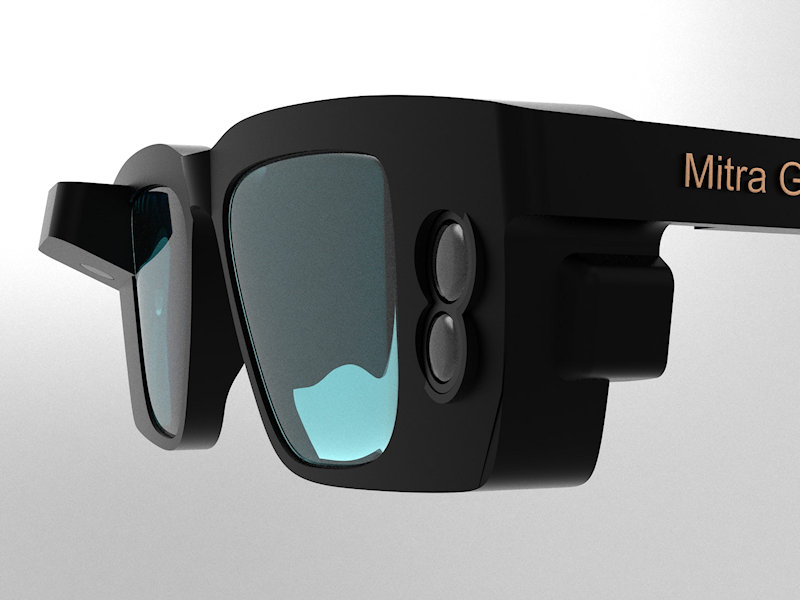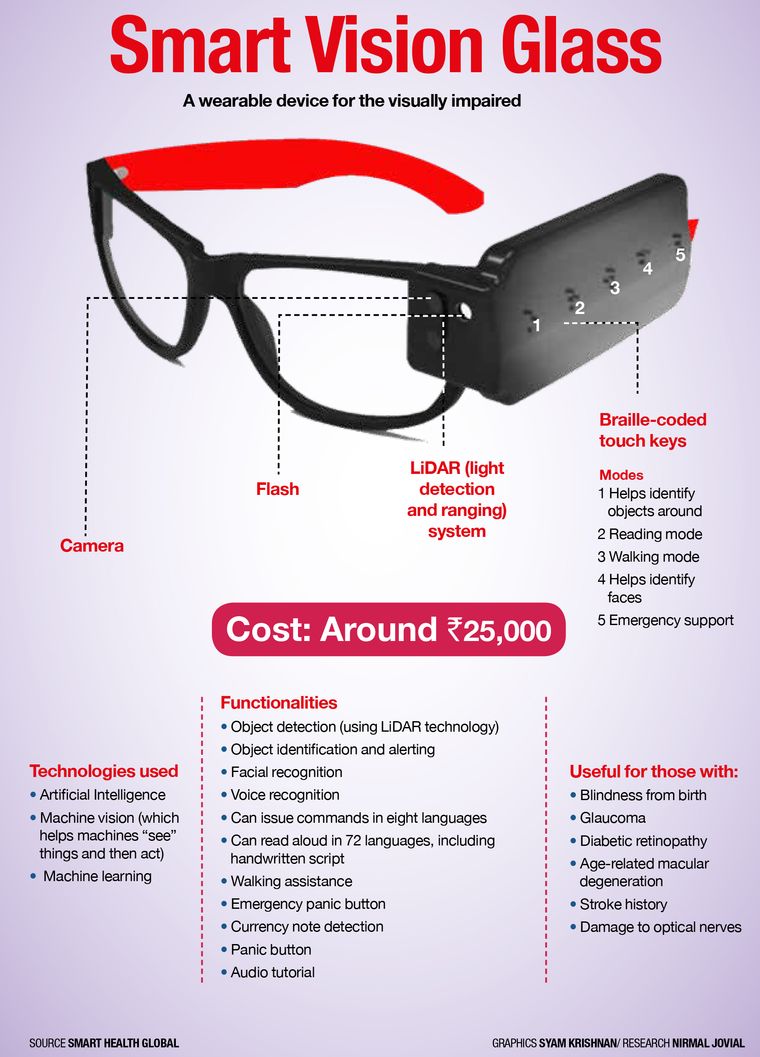Maximizing Efficiency with Screen Readers for the Blind: A Comprehensive Guide
Enhancing Availability Through Assistive Innovation for the Blind
The combination of assistive innovation for the blind stands for a crucial improvement in availability, fundamentally changing exactly how people browse their atmospheres and engage with society. From display visitors to cutting-edge clever walking sticks, these devices not only enhance freedom yet additionally promote inclusivity in different spheres of life. As we explore the diverse kinds of assistive devices and their tangible effect on daily living, it becomes vital to examine exactly how continuous technological innovations are improving the landscape of support for the blind community. What effects do these developments hold for the future of ease of access?
Summary of Assistive Innovation
Assistive technology describes an array of tools and software application designed to enhance the abilities of people with disabilities, consisting of those who are blind or visually impaired. This modern technology plays a vital role in advertising independence and enhancing the top quality of life for customers. By offering alternate techniques for accessing information and performing daily tasks, assistive technology encourages people to browse their settings a lot more properly.
The development and execution of assistive technology embrace a range of principles focused on promoting accessibility. These principles consist of user-centered layout, which prioritizes the requirements and choices of the individual, and the combination of innovation into daily tasks. Such improvements make sure that assistive devices are not only practical yet additionally intuitive and very easy to make use of.
Furthermore, assistive innovation incorporates a diverse range of remedies, from low-tech options like magnifiers to high-tech technologies such as display viewers and Braille displays. The ongoing evolution of this area is driven by the demand to address the one-of-a-kind challenges faced by people with aesthetic disabilities (Wearable technology for low vision). As innovation proceeds to advance, the possibility for enhancing accessibility and advertising inclusivity remains promising, ultimately adding to an extra equitable society

Kinds of Assistive Tools
Numerous sorts of assistive tools are readily available to sustain individuals that are aesthetically damaged or blind, each made to deal with particular requirements and difficulties. These tools can be broadly classified into 3 major kinds: low-tech, mid-tech, and state-of-the-art options.
Low-tech tools consist of items such as magnifiers, Braille labels, and responsive maps. These are fairly basic devices that improve the individual's ability to connect with their atmosphere without calling for complex innovation.
Mid-tech devices often include advanced attributes, such as electronic magnifiers and mobile Braille note-takers. These gadgets can use capabilities like speech output, enabling users to gain access to details much more effectively.

Influence On Daily Living
The availability of numerous assistive tools considerably boosts the lifestyle for people who are visually damaged or blind, influencing their daily living in profound means. By incorporating technologies such as display readers, Braille displays, and audio description solutions into their routines, users get greater freedom and self-reliance. These devices promote accessibility to details, making it possible for people to do daily tasks, such as reading emails, browsing public rooms, and delighting in media web content.
Furthermore, assistive tools encourage people to engage more completely in social interactions and community tasks. The ability to use smartphones furnished with ease of access functions allows for smooth interaction and link with others. This connectivity fosters a feeling of belonging and lowers sensations of isolation.
In professional setups, assistive modern technology supports efficiency by allowing people to full job jobs efficiently. Devices like voice recognition dr eye care software and specialized magnifying gadgets make it possible for customers to join the workforce on equal ground with their sighted peers.

Advancements in Innovation
Current technological advancements have actually substantially transformed the landscape of devices available for people who are aesthetically damaged or blind. The combination of synthetic intelligence (AI) and machine discovering has triggered applications that enhance navigation and things recognition. Smart device apps can now utilize AI to determine and define environments in real-time, offering individuals with valuable contextual details.
Furthermore, advancements in haptic innovation have actually caused the development of smart walking canes equipped with sensors that find obstacles and supply tactile responses. This empowers users to navigate their setting with boosted confidence and independence. Technologies in text-to-speech software program and braille displays have enhanced the ease of access of electronic material, allowing for smooth communication with numerous media.
Wearable innovations, such as smart glasses, are also making strides in helping aesthetic impairment. These gadgets can provide enhanced truth experiences, superimposing essential details onto the customer's field of vision. Jointly, these innovations not only enhance the lifestyle for people who are blind but likewise advertise better inclusion in society. As innovation proceeds to advance, the possibility for even more transformative tools stays on the perspective.
Future Trends and Innovations
As innovation rapidly proceeds, the future of assistive tools for people who are blind holds enormous promise. Technologies in expert system (AI) and artificial intelligence are poised to reinvent the method blind customers communicate with their settings. AI-driven applications are being created to enhance things recognition, permitting users to determine and browse their environments with greater convenience and accuracy.
Furthermore, advancements in haptic comments innovation are making it possible for the production of tactile maps and navigating help that provide real-time info with touch. These innovations not just boost mobility but also foster freedom. Additionally, wearable gadgets furnished with increased fact (AR) features are emerging, providing individuals visual info with audio descriptions, thus bridging the space in between the physical and electronic globes.
Furthermore, the integration of smart home technology presents new opportunities for ease of access, enabling individuals to control their living environments through voice commands or smartphone applications. As collaboration in between technology programmers and the blind area proceeds, the focus on user-centered style will make sure that future developments are tailored to meet the unique demands of eye care optometry this populace (Wearable technology for low vision). The trajectory of assistive innovation guarantees a more empowering and comprehensive future for people who are blind
Conclusion
To conclude, assistive modern technology plays an essential role in boosting accessibility for people with visual impairments. The varied variety of devices, consisting of display visitors and smart walking canes, substantially enhances daily living and cultivates self-reliance. Constant developments in technology and user-centered layout make sure that these tools provide successfully to the distinct demands of the blind area. As advancements development, enhanced inclusivity and empowerment can be anticipated, inevitably enhancing the high quality of life for those affected by aesthetic disabilities.
The integration of assistive innovation for the blind stands for a pivotal advancement in ease of access, essentially modifying just how people browse their atmospheres and engage with culture.Assistive technology refers to a range of gadgets and software application created to improve the capacities of individuals click site with disabilities, consisting of those who are aesthetically damaged or blind. Wearable technology for low vision.As modern technology rapidly progresses, the future of assistive tools for individuals who are blind holds enormous assurance. The trajectory of assistive modern technology promises a more inclusive and empowering future for individuals who are blind
In conclusion, assistive technology plays a critical role in boosting access for people with aesthetic problems.